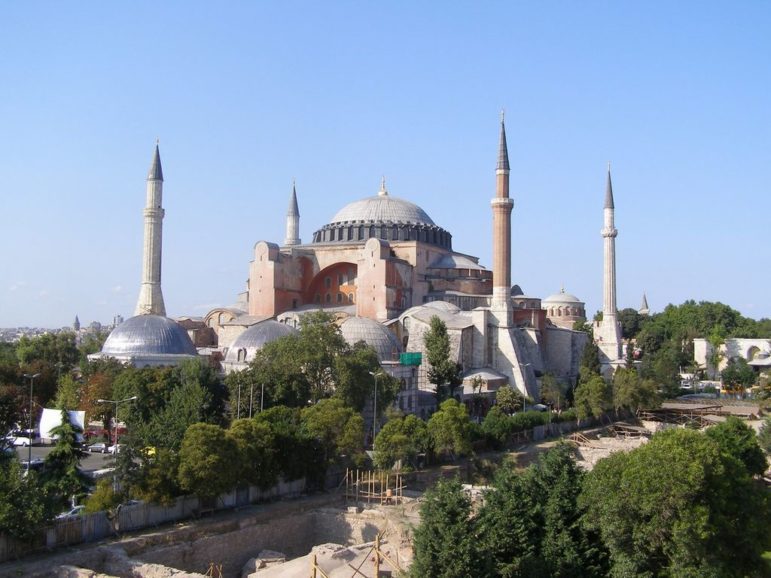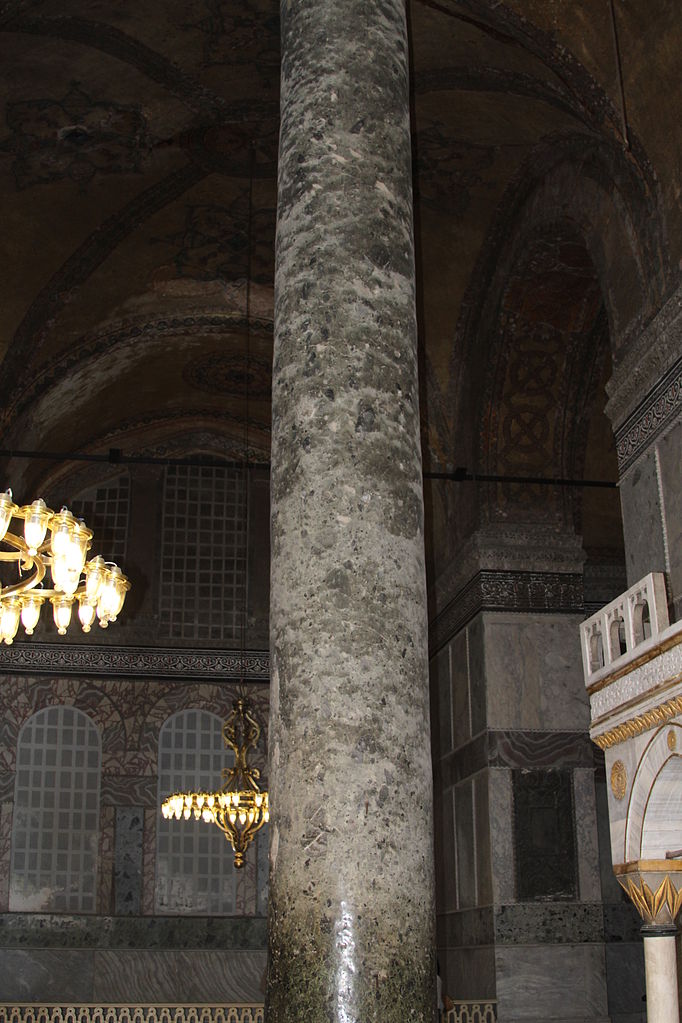ISTANBUL – Last week, Turkish President Recep Tayyip Erdogan formally changed the status of the Hagia Sophia. Previously a secular museum, the world heritage site has been ordered to be converted back to an Islamic mosque, a status it held between 1453 and 1934.
Built under orders by the Byzantine emperor Justinian I, the Hagia Sophia – meaning “of holy wisdom” – was constructed between 532 and 537 CE in as a Christian patriarchal cathedral, the largest in the Byzantine empire until Constantinople was conquered by the Ottoman Empire in 1453.

The Hagia Sophia in 2006 [Milos Radevic, Wikimedia Commons, CC 3.0]
The fall of Constantinople to the Ottomans saw the church converted to an Islamic mosque by Mehmed the Conqueror. Christian relics and mosaics of Jesus were removed and replaced with Islamic architectural features.
The Hagia Sophia remained a mosque until 1931, when it was closed to the public for four years. It was reopened as a museum in 1935. The conversion of the Hagia Sophia into a secular institution was part of Kemal Ataturk’s legacy as the founder of the non-religious Republic of Turkey.
Erdogan’s reversal of the Hagia Sophia’s status was made possible when the Council of State, Turkey’s highest administrative court, revoked the building’s secular status, citing that Mehmed II’s decree of the site as a mosque resulted in a charitable endowment for Muslim religious use that was unlawfully rescinded under both Ottoman and Turkish law. The Turkish high court ruled in early July that “the settlement deed allocated it as a mosque and its use outside this character is not possible legally.”
The reversion of the site to a mosque has been met with concern and condemnations. Statements disapproving of the reversion have come from the Greek Orthodox Church, the Russian Orthodox Church, and the Roman Catholic Church. “My thoughts go to Istanbul,” said Pope Francis. “I think of Santa Sophia and I am very pained.”
UNESCO, the organization of the United Nations that assigns the world heritage designation, expressed disappointment. “The Director-General of UNESCO deeply regrets the decision of the Turkish authorities, made without prior discussion, to change the status of Hagia Sophia,” UNESCO said in a statement.
“Hagia Sophia is an architectural masterpiece and a unique testimony to interactions between Europe and Asia over the centuries,” Audrey Azoulay, UNESCO’s director general, added. “Its status as a museum reflects the universal nature of its heritage, and makes it a powerful symbol for dialogue.”
Regardless, per the decision of the current Turkish government, Hagia Sophia is now a mosque for the foreseeable future.
While the Hagia Sophia is famous for its role in Islam and Christianity, there is also a Pagan connection that is particularly relevant today. July 21 marks the destruction of Temple of Artemis at Ephesus – known also as the Temple of Diana at Ephesus – due to arson, committed in 356 BCE by a man named Herostratus.

The site of the Temple of Artemis at Ephesus in 2017 [FDV, Wikimedia Commons, CC 4.0]
The temple was considered one of seven wonders of the ancient world, and the site dates to the Bronze Age. It was mentioned by the Greek poet and scholar at the Library of Alexandria, Callimachus, in his Hymn to Artemis, where he attributed the temple to the Amazons.
The temple is even mentioned in the Christian bible:
“So that not only this our craft is in danger to be set at nought; but also that the temple of the great goddess Diana should be despised, and her magnificence should be destroyed, whom all Asia and the world worshippeth. Great is Diana of the Ephesians!” [Acts 19: 27-28, King James version]
The temple was rebuilt after the arson and survived another seven centuries before it was closed during the persecution of Pagans in the late Roman Empire and ultimately reduced to rubble in 401 CE.
Today, only the foundation of the temple exists, along with fragments throughout the site. There is nothing much left of it – except for eight magnificent green columns, which are now in the Hagia Sophia.

One of the green marble columns of the Hagia Sophia, originally from the Temple of Artemis at Ephesus [José Luiz Bernardes Ribeiro, Wikimedia Commons, CC 3.0]
When Justinian built the Hagia Sophia, he brought columns from all the temples across the Levant and North Africa, sparing no effort or expense to bring the most beautiful stones to Constantinople. Justinian wanted the Hagia Sophia to fill the visitor with awe upon seeing the size, color, and architecture of the building. Among those pillars were the green columns that had once been part of the temple of Artemis.
In the time since the Hagia Sophia was originally constructed, it has served as a church, a mosque, a museum, and now again a mosque, and yet at its core, there still remain eight pillars that were sacred to a pagan goddess. Perhaps more than any other part of its construction, Diana’s pillars demonstrate the complicated religious history of the Hagia Sophia – a history that remains no matter the building’s current designation.
The Wild Hunt is not responsible for links to external content.
To join a conversation on this post:
Visit our The Wild Hunt subreddit! Point your favorite browser to https://www.reddit.com/r/The_Wild_Hunt_News/, then click “JOIN”. Make sure to click the bell, too, to be notified of new articles posted to our subreddit.